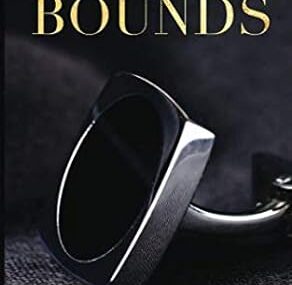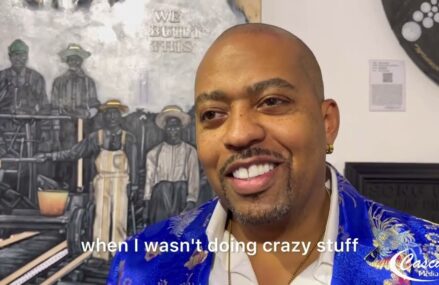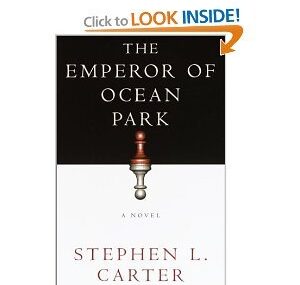On June 7, 1953, Cole performed for the famed ninth Cavalcade of Jazz concert held at Wrigley Field in Chicago which was produced by Leon Hefflin, Sr. Also featured that day were Roy Brown and his Orchestra, Shorty Rogers, Earl Bostic, Don Tosti, and His Mexican Jazzmen, and Louis Armstrong and his All-Stars with Velma Middleton.[29][30]
On November 5, 1956, The Nat ‘King’ Cole Show debuted on NBC. The variety program was one of the first hosted by an African American.[31] The program started at a length of fifteen minutes but was increased to a half-hour in July 1957. Rheingold Beer was a regional sponsor, but a national sponsor was never found. The show was in trouble financially despite efforts by NBC, Harry Belafonte, Tony Bennett, Ella Fitzgerald, Eartha Kitt, Frankie Laine, Peggy Lee, and Mel Tormé.[32] Cole decided to end the program. The last episode aired on December 17, 1957.[33] Commenting on the lack of sponsorship, Cole said shortly after its demise, “Madison Avenue is afraid of the dark.”[34][35]
Throughout the 1950s, Cole continued to record hits that sold millions throughout the world, such as “Smile”, “Pretend”, “A Blossom Fell”, and “If I May”. His pop hits were collaborations with Nelson Riddle,[20] Gordon Jenkins, and Ralph Carmichael. Riddle arranged several of Cole’s 1950s albums, including Nat King Cole Sings for Two in Love (1953), his first 10-inch LP. In 1955, “Darling, Je Vous Aime Beaucoup” reached number 7 on the Billboard chart. Love Is the Thing went to number one in April 1957 remained his only number one album.
In 1959, he received a Grammy Award for Best Performance By a “Top 40” Artist for “Midnight Flyer”.[36]
Capitol Records Building, known as “The House That Nat Built” on Vine St.
In 1958, Cole went to Havana, Cuba, to record Cole Español, an album sung entirely in Spanish. It was so popular in Latin America and the U.S. that it was followed by two more Spanish-language albums: A Mis Amigos (1959) and More Cole Español (1962).
After the change in musical tastes, Cole’s ballads appealed little too young listeners, despite a successful attempt at rock and roll with “Send for Me”,[20] which peaked at number 6 on the pop chart. Like Dean Martin, Frank Sinatra, and Tony Bennett, he found that the pop chart had been taken over by youth-oriented acts.
The 1960s
In 1960, Cole’s longtime collaborator Nelson Riddle left Capitol to join Reprise Records, which was established by Frank Sinatra. Riddle and Cole recorded one final hit album, Wild Is Love, with lyrics by Ray Rasch and Dotty Wayne. Cole later retooled the concept album into an Off-Broadway show, I’m with You.
Nevertheless, Cole recorded several hit singles during the 1960s, including “Let There Be Love” with George Shearing in 1961, the country-flavored hit “Ramblin’ Rose” in August 1962 (reaching # 2 on the Pop chart), “Dear Lonely Hearts” (#13), “That Sunday, That Summer” (#12) and “Those Lazy-Hazy-Crazy Days of Summer”[20] (his final top-ten hit, reaching number 6 on the Pop chart). He performed in many short films, sitcoms, and television shows and played W. C. Handy in the film St. Louis Blues (1958). He also appeared in The Nat King Cole Story, China Gate, and The Blue Gardenia (1953).
In January 1964, Cole made one of his final television appearances, on The Jack Benny Program. He was introduced as “the best friend a song ever had” and sang “When I Fall in Love”. Cat Ballou (1965), his final film, was released several months after his death.
Earlier on, Cole’s shift to traditional pop led some jazz critics and fans to accuse him of selling out, but he never abandoned his jazz roots; as late as 1956 he recorded an all-jazz album, After Midnight, and many of his albums after this are fundamentally jazz-based, being scored for a big band without strings, although the arrangements focus primarily on the vocal rather than instrumental leads.
Cole had one of his last major hits in 1963, two years before his death, with “Those Lazy-Hazy-Crazy Days of Summer”, which reached number 6 on the Pop chart. “Unforgettable” was made famous again in 1991 by Cole’s daughter Natalie when modern recording technology was used to reunite father and daughter in a duet. The duet version rose to the top of the pop charts, almost forty years after its original popularity.[37]
Nat’s final studio album was titled, “L-O-V-E”. The album peaked at #4 on the Billboard Albums chart in the spring of 1965.
Personal life
Around the time Cole launched his singing career, he entered into Freemasonry. He was raised in January 1944 in the Thomas Waller Lodge No. 49 in California. The lodge was named after fellow Prince Hall mason and jazz musician Fats Waller.[38][39] He joined the Scottish Rite Freemasonry,[40] becoming Master Mason.[41] Cole was “an avid baseball fan”, particularly of Hank Aaron. In 1968, Nelson Riddle related an incident from some years earlier and told of music studio engineers, searching for a source of noise, finding Cole listening to a game on a transistor radio.[20]
Marriages and children
Cole and his second wife, Maria, 1951
Cole met his first wife, Nadine Robinson, while they were on tour for the all-black Broadway musical Shuffle Along. He was 18 when they married. She was the reason he moved to Los Angeles and formed the Nat King Cole Trio.[42] This marriage ended in divorce in 1948. On March 28, 1948 (Easter Sunday), six days after his divorce became final, Cole married the singer Maria Hawkins. The Coles were married in Harlem’s Abyssinian Baptist Church by Adam Clayton Powell Jr. They had five children: Natalie (1950–2015), who had a successful career as a singer before dying of congestive heart failure at age 65; an adopted daughter, Carole (1944–2009, the daughter of Maria’s sister), who died of lung cancer at the age of 64; an adopted son, Nat Kelly Cole (1959–1995), who died of AIDS at the age of 36;[43] and twin daughters, Casey and Timolin (born September 26, 1961), whose birth was announced in the “Milestones” column of Time magazine on October 6, 1961. Maria supported him during his final illness and stayed with him until his death. In an interview, she emphasized his musical legacy and the class he exhibited despite his imperfections.[44]



